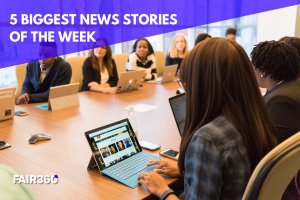COVID-19 has changed the way students across the U.S. are learning. “Distance learning” suddenly became a household word and nearly everyone is learning how to conduct meetings over video chat.
HP Inc. (No. 43 on Fair360, formerly DiversityInc’s 2020 Top 50 Companies for Diversity) stepped up to help Title 1 and underserved school districts across the U.S. during COVID-19. Title 1 schools receive federal funding because they have large concentrations of low-income students.
HP started HP Turn to Learn, a brand-new program that delivers physical learning materials to both teachers and students who may have difficulty accessing the internet while learning at home. HP also partnered with TIME for Kids in order to remove the paywall on their website and get TIME physical learning materials to students.

















